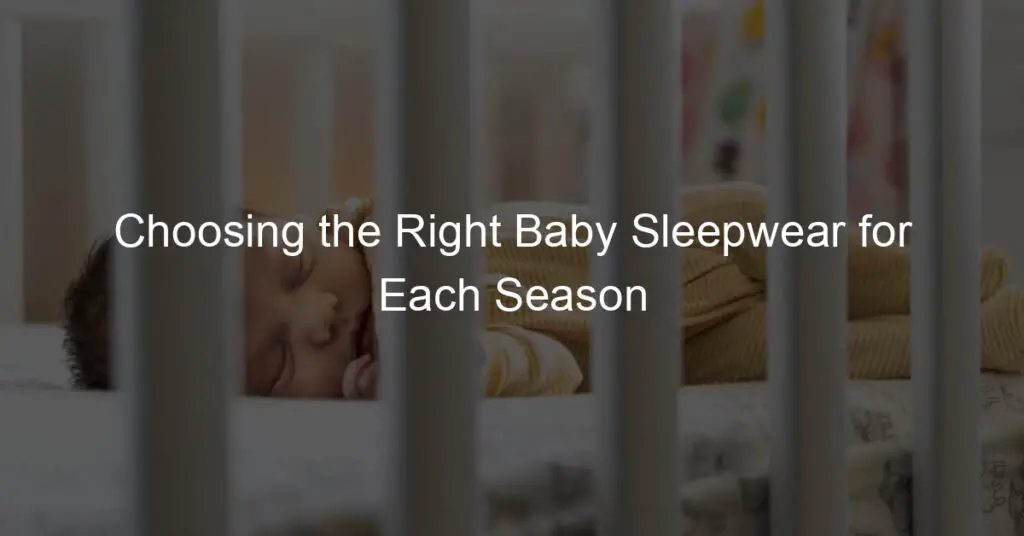Introduction to Baby Sleep Patterns
Understanding a baby’s sleep patterns can be a challenging task for new parents. However, it is a crucial part of ensuring your baby’s health and development. In this section, we will delve into the fascinating world of newborn sleep patterns and the importance of establishing good sleep habits early on.
- Understanding Newborn Sleep Patterns
Newborn babies have a different sleep pattern compared to adults. They typically sleep in cycles of 16-20 hours per day, divided into periods of wakefulness and sleep. These cycles can vary greatly, with some babies sleeping for longer periods and others for shorter periods. It’s important to remember that each baby is unique and their sleep patterns can vary.
During the first few months, your baby will experience a phase called REM sleep, which is a lighter sleep stage where dreams occur. This stage is crucial for their brain development. As they grow, they will gradually start to have more deep sleep.
- Importance of Establishing Good Sleep Habits Early
Establishing good sleep habits early on is essential for your baby’s health and development. A consistent sleep routine can help regulate your baby’s internal body clock, leading to better sleep quality and duration. It can also reduce the likelihood of sleep problems later in life.
Good sleep habits include setting a consistent bedtime, creating a relaxing bedtime routine, and ensuring your baby’s sleep environment is quiet, dark, and comfortable. Remember, it’s never too early to start a good sleep routine. However, patience is key as it can take time for your baby to adjust to a new routine.
In conclusion, understanding your baby’s sleep patterns and establishing good sleep habits early on can significantly impact their health and development. As a parent, it’s important to be patient and flexible as your baby adjusts to their new world.
Baby Bassinet Safety: A Comprehensive Guide
Ensuring your baby’s safety is a top priority, especially when it comes to their sleeping environment. One of the first pieces of furniture you’ll need for your newborn is a bassinet. But how do you choose the right one? This guide will help you navigate the process.
Choosing the Right Bassinet
When it comes to selecting the perfect bassinet for your baby, there are several factors to consider. It’s not just about aesthetics or price; safety should be your primary concern. Here are some key points to keep in mind:
-
- Factors to consider when buying a bassinet
Firstly, consider the bassinet’s stability. A sturdy bassinet will not tip over easily, ensuring your baby’s safety. Secondly, pay attention to the mattress. It should be firm, fit snugly within the bassinet and be no more than 1.5 inches thick. If it’s too soft, it can conform to the shape of your baby’s head or face, increasing the risk of suffocation.
Another important factor is the bassinet’s size. It should be deep enough to keep your baby from climbing out. However, it should also have enough room for your baby to move comfortably. Lastly, consider the bassinet’s portability. If you plan on moving the bassinet from room to room, ensure it has lockable wheels.
-
- Key safety features to look for
When examining a bassinet’s safety features, start with its construction. The bassinet should have a sturdy frame, a wide base, and no sharp edges or points that could harm your baby. The mattress should be firm and fit snugly within the bassinet. There should be no gaps where your baby could get stuck.
Another key safety feature is the bassinet’s mesh walls. These walls promote air circulation and reduce the risk of SIDS (Sudden Infant Death Syndrome). Also, ensure the bassinet doesn’t have any small parts that could pose a choking hazard.
Lastly, check if the bassinet complies with safety standards. In the U.S., for example, bassinets should meet the safety standards set by the Consumer Product Safety Commission (CPSC). You can usually find this information on the product’s packaging or online description.
Bassinet Usage for Babies: Dos and Don’ts
Ensuring the safety and comfort of your baby while they sleep is paramount. Here are some essential dos and don’ts when using a bassinet for your baby.
-
- Proper positioning of the baby in the bassinet
When placing your baby in the bassinet, always ensure they are lying on their back. This position is recommended by the American Academy of Pediatrics as it significantly reduces the risk of Sudden Infant Death Syndrome (SIDS). Avoid placing pillows, blankets, or stuffed animals in the bassinet as they can pose a suffocation risk. The mattress should be firm and fit snugly within the bassinet to prevent any gaps where your baby could potentially get stuck.
-
- When to transition from a bassinet to a crib
The transition from a bassinet to a crib is a significant milestone in your baby’s life. This usually happens when your baby reaches the weight limit of the bassinet, which is typically around 15 to 20 pounds, or when they start to roll over, sit up, or show signs of outgrowing the bassinet. Always refer to the manufacturer’s guidelines for the specific weight and age limits of your bassinet. Remember, safety should always be your top priority.
By following these guidelines, you can ensure that your baby sleeps safely and comfortably in their bassinet. Always remember to monitor your baby regularly and adjust their sleeping arrangements as they grow and develop.
Putting Baby in Bassinet Awake: Pros and Cons
As a parent, you may wonder if it’s beneficial to put your baby in the bassinet while they are still awake. This practice has both advantages and potential challenges that we will explore in this section.
Benefits of Putting Awake Baby in Bassinet
There are several benefits to this approach that can contribute to your baby’s development and sleep quality. Let’s take a look at some of the key benefits:
-
- Encourages self-soothing: When babies are put in the bassinet awake, they learn to self-soothe. This is an important skill that can help them fall asleep on their own. According to a Wikipedia article on infant sleep training, self-soothing can help babies sleep for longer periods and wake up less during the night.
- Promotes better sleep in the long run: Babies who learn to fall asleep independently often develop better sleep habits as they grow. They are less likely to need parental intervention to fall back asleep if they wake up in the middle of the night. This not only results in better sleep for the baby but also for the parents.
In conclusion, putting your baby in the bassinet while they’re awake can be beneficial for both the baby and the parents. It encourages self-soothing and promotes better sleep in the long run. However, it’s important to remember that every baby is unique and what works for one may not work for another. Always consult with your pediatrician if you have any concerns or questions.
Potential Challenges of Awake Baby in Bassinet
While there are numerous benefits to putting your baby in the bassinet awake, it’s essential to also consider the potential challenges that can arise. These challenges may vary from baby to baby, but two common issues often arise:
-
- Initial resistance from the baby: Babies are creatures of habit. If they are used to falling asleep in your arms or in a swing, they may initially resist the change to falling asleep in a bassinet. This resistance can manifest in different ways, such as crying, fussing, or refusing to settle. It’s important to remember that this is a normal part of the transition and with patience and consistency, your baby will eventually adjust to the new routine.
- Increased anxiety for parents: As a parent, it’s natural to feel anxious when introducing new routines or changes to your baby’s sleep environment. You may worry about your baby’s safety, or whether they will be able to fall asleep on their own. It’s important to remember that these feelings are normal. However, it’s also crucial to ensure that the bassinet you choose meets all safety standards, and to monitor your baby closely during this transition period. This will help to alleviate some of your anxiety.
In conclusion, while these challenges may seem daunting, they are not insurmountable. With patience, consistency, and a focus on safety, you can help your baby adjust to sleeping in a bassinet while awake, and reap the benefits in the long run.
Baby Sleep Training: A Step-by-Step Guide
As a parent, ensuring your baby gets enough sleep is crucial for their growth and development. However, this can be a challenging task, especially for first-time parents. This guide aims to help you understand when and how to start sleep training your baby.
When to Start Sleep Training
Knowing when to start sleep training your baby is essential. It’s not about a specific age, but rather about recognizing the signs that your baby is ready. It’s also important to dispel common misconceptions about sleep training.
-
- Recognizing signs that your baby is ready for sleep training
Every baby is unique and may show readiness for sleep training at different ages. However, most babies are ready for sleep training between 4 to 6 months. Signs that your baby may be ready include the ability to self-soothe, falling asleep independently, and waking up at predictable times. Remember, these are just guidelines, and it’s essential to consider your baby’s individual needs and development.
-
- Common misconceptions about sleep training
There are many misconceptions about sleep training that can cause unnecessary worry. One common misconception is that sleep training involves leaving your baby to cry it out. In reality, there are many gentle sleep training methods that do not involve leaving your baby to cry. Another misconception is that sleep training means your baby will sleep through the night. While sleep training can help improve sleep patterns, it doesn’t guarantee that your baby will sleep uninterrupted for 8 hours. Understanding these misconceptions can help you approach sleep training with a clear and informed mindset.
Remember, sleep training is a process, and it’s okay if it takes time. The goal is to help your baby develop healthy sleep habits that will benefit them in the long run.
Effective Sleep Training Methods
When it comes to sleep training your baby, there are several methods that parents can use. Each method has its own unique approach and what works best will depend on your baby’s temperament and your own parenting style. In this section, we will discuss two popular methods: the Gradual Retreat and the Ferber Method.
-
- Gradual Retreat
The Gradual Retreat method, also known as the “camping out” method, involves slowly moving away from your baby’s crib or bassinet over time. The goal is to gradually reduce your baby’s dependence on you to fall asleep.
Here’s how it works: Start by sitting next to your baby’s crib or bassinet until they fall asleep. Each night, move a little further away. Eventually, you’ll be able to leave the room entirely while your baby falls asleep on their own.
This method requires patience, as progress can be slow. However, it can be a gentle and effective way to help your baby learn to self-soothe.
-
- Ferber Method
The Ferber Method, also known as “graduated extinction,” is a bit more structured. Developed by Dr. Richard Ferber, this method involves letting your baby cry for a predetermined amount of time before going in to comfort them.
Here’s how it works: On the first night, you might let your baby cry for five minutes before going in to reassure them. Each subsequent night, you increase the wait time by a few minutes. The goal is to teach your baby that they can soothe themselves back to sleep.
While this method can be tough for parents to stick to, research suggests it can be effective in improving sleep patterns. However, it’s important to note that this method is not recommended for babies under six months old. For more information, you can read Dr. Ferber’s book, “Solve Your Child’s Sleep Problems“.
Remember, every baby is unique and what works for one might not work for another. It may take some trial and error to find the sleep training method that works best for your family. Always consult with your pediatrician before starting any new sleep training regimen.
Parenting Tips for Newborn Sleep
As a new parent, ensuring your newborn gets enough sleep can be a daunting task. However, with the right strategies, you can create a conducive sleep environment that promotes healthy sleep patterns for your baby. Here are some tips to guide you.
Creating a Soothing Sleep Environment
Creating a soothing sleep environment is crucial for your newborn’s sleep quality. This involves establishing a consistent bedtime routine and creating a calming sleep atmosphere.
-
- Importance of a Consistent Bedtime Routine
A consistent bedtime routine signals to your baby that it’s time to wind down and get ready for sleep. This routine can include activities such as bathing, reading a story, and singing a lullaby. According to a study by the American Academy of Pediatrics, a consistent bedtime routine can improve sleep duration and reduce night wakings.
-
- How to Create a Calming Sleep Atmosphere
Creating a calming sleep atmosphere involves controlling the room temperature, using soft lighting, and reducing noise levels. A study published in the Journal of Pediatric Nursing found that babies sleep better in a quiet, dimly lit room with a temperature of around 68-72°F (20-22°C).
Remember, every baby is unique and what works for one might not work for another. It’s all about finding what best suits your baby and sticking to it. With patience and consistency, your newborn will soon be sleeping soundly.
Handling Night Wakings and Sleep Regressions
One of the most challenging aspects of parenting a newborn is dealing with night wakings and sleep regressions. It’s essential to understand these phenomena and learn how to manage them effectively. Let’s explore these two topics in more detail.
-
- What to do when your baby wakes up in the night
When your baby wakes up in the middle of the night, it can be a stressful experience. However, it’s important to remember that this is a normal part of their development. Here are some steps you can take:
-
-
- Stay calm: Your baby can sense your emotions, so try to remain calm and composed.
- Check for discomfort: Your baby might be waking up due to a dirty diaper, hunger, or teething pain. Address these issues if present.
- Help your baby self-soothe: Instead of immediately picking up your baby, give them a few minutes to try and self-soothe. This can help them learn to fall back asleep on their own.
- Understanding and managing sleep regressions
-
Sleep regressions are periods when a baby who has been sleeping well suddenly starts waking up at night or skipping naps. These can occur at various ages and are typically linked to developmental milestones. Here’s how you can manage them:
-
- Be patient: Sleep regressions are temporary. Keep following your regular sleep routine and this phase will pass.
- Offer comfort: During this time, your baby may need extra cuddles and reassurance.
- Seek professional advice: If the sleep regression lasts for more than a few weeks, it may be worth seeking advice from a healthcare professional or a sleep consultant.
In conclusion, night wakings and sleep regressions can be challenging for both parents and babies. However, with understanding, patience, and the right strategies, these phases can be managed effectively. Remember, every baby is unique and what works for one might not work for another. So, keep trying different strategies until you find what works best for your baby.
Conclusion: Awake Newborn in Bassinet – Yes or No?
After a thorough examination of baby sleep patterns, bassinet safety, the pros and cons of putting a baby in a bassinet while awake, and a step-by-step guide to baby sleep training, we arrive at the all-important question: Should you put your awake newborn in a bassinet?
-
- Recap of key points
Firstly, it’s crucial to understand that each baby is unique and what works for one might not work for another. However, there are some common points to consider:
-
-
- Babies have different sleep patterns than adults, and understanding these patterns can help in establishing a healthy sleep routine.
- Bassinet safety is paramount. Always ensure the bassinet is in good condition, free from hazards, and placed in a safe location.
- Putting your baby in the bassinet while awake can have both pros and cons. It can help in sleep training but may also lead to fussiness if the baby is not ready to sleep.
- Sleep training is a process and requires patience and consistency.
- Final thoughts and recommendations
-
Based on the information gathered, it’s generally recommended to put your awake newborn in the bassinet. This can help them associate the bassinet with sleep and eventually lead to self-soothing and independent sleep. However, it’s essential to monitor your baby’s reactions and adjust the routine if necessary.
Remember, the ultimate goal is to ensure your baby’s safety and comfort. If your baby seems distressed or uncomfortable, it’s okay to hold and soothe them before putting them back in the bassinet. It’s all about finding a balance that works for your baby and you.
Parenting is a journey filled with learning and adjustments. Trust your instincts, be patient, and remember that it’s okay to seek help when needed. For more information on baby sleep patterns and safety, you can visit Wikipedia.














